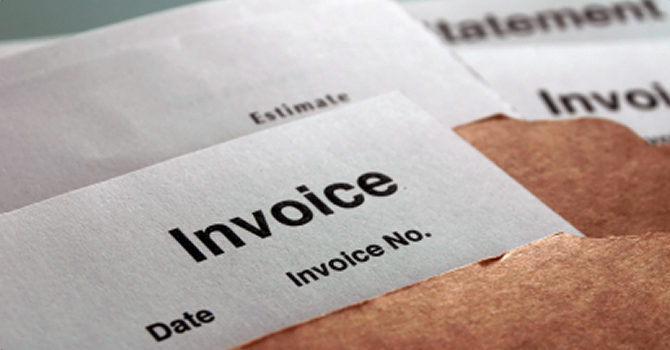Best practices — How to make an invoice

To get paid for your products or services, you must know how to make an invoice. That's because invoices are the professional way you ask to be paid for services or products that you've provided.
In this article, we'll guide you through the work that goes into making an invoice. By the time you're finished reading, you'll know how to make an invoice like a pro.
To create an invoice, you need to know
- What goes into an invoice?
This includes basic information such as your contact details, your client's contact details, the date of your invoice, an invoice number, payment details, and a due date. - The project or project components that you are invoicing for.
- How many work hours and resources you have spent on each project component.
Why You Can't Make an Invoice from Memory
Your work creating an invoice starts long before you sit down at your computer to put the invoice together. This is especially true for service providers. Every client you work with has different needs, and every project you complete will have different components. So every invoice you create will be unique.
Let's dig a little deeper into this.
Theoretically, you could scramble together an invoice at the end of a project, recalling from memory the components and work hours you've put into the project. I suspect there are freelancers who take this approach, especially when they're starting out and haven't yet learned how to make an invoice. Their business is unlikely to last for long if they keep this up.
That's because relying on your memory to create invoices is unprofessional. The human memory is notoriously unreliable, and you will make mistakes.
When you make a mistake, any of the following is likely to happen.
- You forget about some of the work you did as part of the project. The result will be that you undercharge your client. This is an unsustainable business practice. If you're lucky, your client will notice you've done some work for free, and will get in touch to correct you. If you're unlucky, your client will continue to expect you to work for less than you're worth.
- You unintentionally add in extra hours or project components. Doing this, you'll overcharge your client. Even though you didn't intend to overcharge, it's still dishonest. Clients are usually forgiving of one or two mistakes, as long as you correct them when they're pointed out to you. But continually overcharge clients, and they'll find another service provider to work with.
- As your client list grows, you'll struggle more and more to remember what you've done for each of your clients. This increases your chances of making mistakes on your invoices.
The potential for these mistakes creates a ton of unnecessary stress around creating invoices. You can end up procrastinating over making your invoices simply because you know that however good your memory is, you can't remember everything. It's tough creating invoices when you know what you're doing is inaccurate and lacks integrity.
By sending out inaccurate invoices you'll wind up wasting time you could be working on projects. Instead, you'll be mopping up the mess you've made with invoice mistakes.
Do you see where this is going? You can't just sit down at your computer and conjure up a professional and accurate invoice from memory. It doesn't work.
What It Really Takes to Make a Professional Invoice
Your work creating an invoice starts the moment you put together a project proposal for a client. In the proposal, you break down the project into various components, and estimate what each component will cost.
As you work on the project, you track the time and resources you put into each project component. You can do this using old school pen and paper, with a spreadsheet, or - if you want to keep things really simple - using time tracking software such as Cashboard.
Then, when it comes to putting together your invoice, you'll have everything you need to create a professional, accurate invoice. Making invoices becomes a breeze. No more procrastinating. No more worries over your integrity. No more guilt-inducing emails from clients to tell you that you've overcharged. No more working evenings and weekends to put things right.
Tracking your workflow on projects allows you to deliver more accurate estimates in future project proposals. That's better for you and your clients.
There's an additional advantage to tracking your workflow. Paying attention to how long a project is taking makes you aware if a project is likely to run over budget. You can contact the client as soon as you notice this. That way they can choose whether to increase the budget, or reduce the scope of the project. You won't end up in situations where you don't get paid for work you thought your client wanted, but that they can't afford.
If you want to make producing invoices a breeze, start tracking your workflow today.
Invoice resources
- Cashboard invoice software
- Blank invoice template - Google Docs
- Free invoice template - Microsoft Word
comments powered by Disqus


